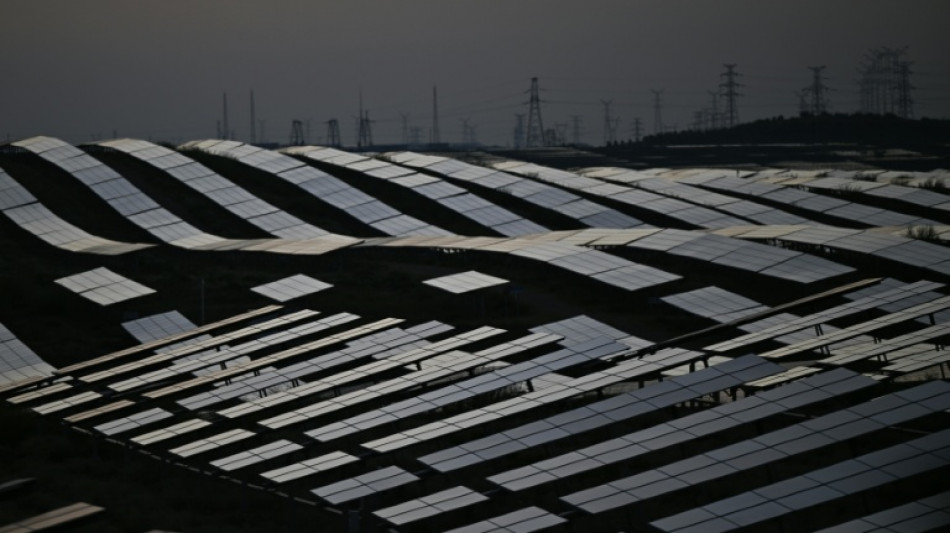
-
 'Morgue is full': how Kenyan starvation cult kept killing
'Morgue is full': how Kenyan starvation cult kept killing
-
Nickel mining threatens Indonesia coral haven, NGOs warn
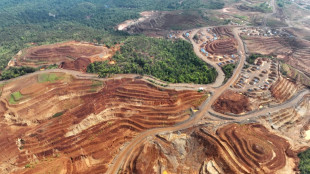
-
 Drones fly over multiple Danish airports
Drones fly over multiple Danish airports
-
Raleigh reaches 60 homers as Mariners clinch first division title since 2001

-
 Savea leads 'stung' All Blacks, Wallaby Slipper to hit 150 Test milestone
Savea leads 'stung' All Blacks, Wallaby Slipper to hit 150 Test milestone
-
Morocco High Atlas whistle language strives for survival
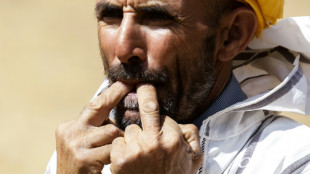
-
 Glimmering sea of solar as China expands desert installation
Glimmering sea of solar as China expands desert installation
-
France's Sarkozy set to learn fate in Libya case

-
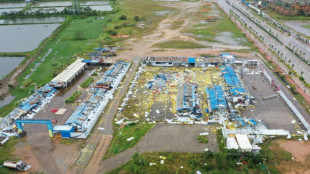 Clean-up underway in southern China after Typhoon Ragasa sweeps through
Clean-up underway in southern China after Typhoon Ragasa sweeps through
-
Apple asks EU to scrap landmark digital competition law

-
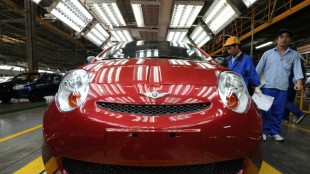 Asian markets slide as traders prepare for key US data
Asian markets slide as traders prepare for key US data
-
Return of millions of Afghans fuels terror potential

-
 Savea to lead 'stung' All Blacks as Robertson makes four changes
Savea to lead 'stung' All Blacks as Robertson makes four changes
-
'Shut your mouth': Low-paid women still waiting for their #MeToo

-
 Famed 'sponge cities' Chinese architect dead in Brazil plane crash
Famed 'sponge cities' Chinese architect dead in Brazil plane crash
-
Palestinian leader to address UN as peace push gathers steam

-
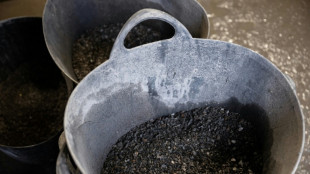 Canada's Indigenous wary of mining push in rich 'Ring of Fire'
Canada's Indigenous wary of mining push in rich 'Ring of Fire'
-
Trump visit adds to intensity as Ryder Cup looms

-
 Savea to lead All Blacks as four changes made to face Wallabies
Savea to lead All Blacks as four changes made to face Wallabies
-
Kimmel scores decade-high ratings amid Trump fight: Disney

-
 Trump trolls Biden with White House 'autopen' portrait
Trump trolls Biden with White House 'autopen' portrait
-
Low bar, high hopes: China unveils new climate goals

-
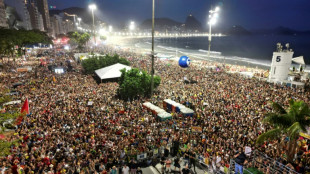 Under-fire Brazil Senate scraps immunity bid
Under-fire Brazil Senate scraps immunity bid
-
Donald and Bradley tout respect, trade jabs at Ryder Cup opening ceremony

-
 Escalatorgate: Trump demands probe into UN 'triple sabotage'
Escalatorgate: Trump demands probe into UN 'triple sabotage'
-
In first, China unveils specific emissions targets
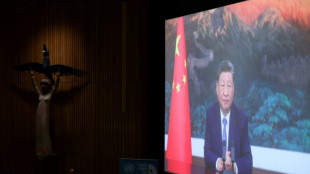
-
 Alvarez hat-trick helps Atletico edge Rayo thriller
Alvarez hat-trick helps Atletico edge Rayo thriller
-
Con job? Climate change is my job, says island nation leader

-
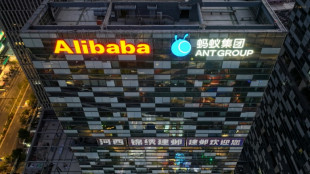 US stocks fall again while Alibaba gains on big AI push
US stocks fall again while Alibaba gains on big AI push
-
Forest denied winning European return by Antony, Roma down Nice

-
 Postecoglou's Forest held by Antony's Betis on European return
Postecoglou's Forest held by Antony's Betis on European return
-
Eze nets first goal as Arsenal join Man City in League Cup last 16

-
 Guardians' Fry has facial fractures after taking fastball to face
Guardians' Fry has facial fractures after taking fastball to face
-
Giants to go with rookie QB Dart, bench NFL veteran Wilson

-
 Police clashes mar rally for Uganda opposition leader Bobi Wine
Police clashes mar rally for Uganda opposition leader Bobi Wine
-
China unveils steady but restrained climate goals
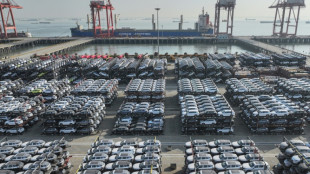
-
 Trump 'incredibly impatient' with Russia on Ukraine, VP Vance says
Trump 'incredibly impatient' with Russia on Ukraine, VP Vance says
-
France, US tell Iran still chance to avoid nuclear sanctions

-
 Big news: Annual eating contest roars to life in Fat Bear Week
Big news: Annual eating contest roars to life in Fat Bear Week
-
In UN debut, new Syria leader warns on Israel but backs dialogue

-
 Malawi's ex-president Mutharika returns to power in crushing vote win
Malawi's ex-president Mutharika returns to power in crushing vote win
-
Under-fire Brazil senators scrap immunity bid
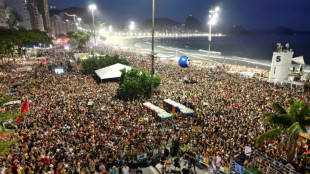
-
 Morikawa calls on US Ryder Cup fans 'to go crazy'
Morikawa calls on US Ryder Cup fans 'to go crazy'
-
India see off Bangladesh to book Asia Cup final spot

-
 Rubio calls for Russia to stop the 'killing' in Ukraine
Rubio calls for Russia to stop the 'killing' in Ukraine
-
Macron tells Iran president only hours remain to avert nuclear sanctions

-
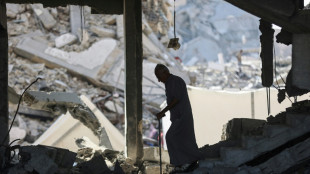 UN humanitarian chief slams impunity in face of Gaza 'horror'
UN humanitarian chief slams impunity in face of Gaza 'horror'
-
Danish PM apologises to victims of Greenland forced contraception

-
 Planetary health check warns risk of 'destabilising' Earth systems
Planetary health check warns risk of 'destabilising' Earth systems
-
Typhoon Ragasa slams into south China after killing 14 in Taiwan
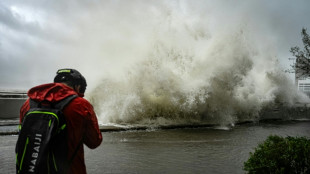

Glimmering sea of solar as China expands desert installation
An ocean of blue solar panels ripples across the ochre dunes of Inner Mongolia's Kubuqi desert, a glittering example of China's almost inconceivably mammoth energy transition.
Even as other countries have put the brakes on desert solar projects for economic or technical reasons, China -- the world's largest emitter of greenhouse gases -- is ploughing ahead.
Desert solar installations are a key part of China's plans to reach carbon neutrality by 2060. The country's solar capacity dwarfs global efforts and is so substantial it may even impact local weather patterns.
"Before, there was nothing here... it was desolate," Kubuqi local Chang Yongfei told AFP as he gestured towards fields of shimmering panels.
The installations are so enormous, they are visible from space.
AFP analysis of satellite images over the last decade shows in Kubuqi alone more than 100 square kilometres of panels have been installed, an area roughly the size of Paris.
On Thursday, China pledged to expand wind and solar capacity to more than six times its 2020 levels, as it tries to slash greenhouse gas emissions by 7-10 percent from peak levels.
The "defining factor" for building in the desert is the availability of otherwise unused land, according to analyst David Fishman.
But the remote, sun-soaked terrain poses formidable challenges.
Sandstorms can degrade panel ventilators, while blistering temperatures reduce the efficiency of solar cells. Sand accumulation can demand scarce water for cleaning.
Kubuqi's solar panels are designed to counter those obstacles, with self-cleaning ventilators and double-sided cells that allow them to capture light reflected from the ground, according to Chinese state media.
- Infrastructure key -
The distance to energy-hungry urban areas, and the network sophistication required to transport the electricity, has stalled desert projects from North Africa to the United States.
The energy generated in Kubuqi is destined for densely populated Beijing, Tianjin and Hebei, hundreds of kilometres away.
And the growth of solar capacity -- overshooting a government target nearly six years early -- has not been matched by power grid development.
This causes some energy to be lost, along with congestion on power lines.
Overcoming this requires infrastructure "to effectively allocate and dispatch power around the country without allowing bottlenecks to occur", said Fishman.
Some places, including Inner Mongolia and neighbouring Ningxia and Gansu, are "restricting new project approvals unless they can explicitly demonstrate" the energy won't be wasted, he added.
Despite this, in the first half of the year, China installed more solar than the entire solar capacity in the United States as of the end of 2024.
- Coal -
The sheer scale of some desert solar fields might create their own climatic effect, according to the University of Lund's Zhengyao Lu.
Heat absorption across large areas can change atmospheric flows and have "negative secondary effects", like rainfall reduction elsewhere, he said.
However, the risks of solar energy "remain minor compared to the dangers of continuing greenhouse gas emissions", he added.
The solar expansion does not mean fossil fuels have been abandoned, especially in Inner Mongolia, a traditional mining region.
Around Kubuqi, soot-blackened trucks and chimney stacks belching smoke show the industry's persistence.
China brought more coal power online in the first half of this year than any time since 2016, a report said in August.
The polluting fuel "constitutes a real structural obstacle to the expansion of wind and solar power", NGO Greenpeace said this summer.
- 'Good transition' -
Chang, the local resident, told AFP he used to work in the coal industry.
Now, he runs a hotel made up of huts nestled in the sand dunes, not far from the solar fields.
Views of the shimmering solar cells have gone viral online, as Kubuqi has become a popular domestic holiday destination.
"The transition has been very good for the region," 46-year-old Chang said.
Quadbike tours, camel rides and dune surfing have become a new source of income for locals.
Chang worries solar expansion might swallow up the whole desert, and with it this new revenue stream.
"But I have confidence the government will leave us a little bit," he said.
"It should be enough."
T.Germann--VB
